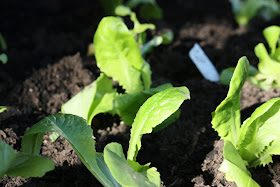Over the past few days, we have read several books about gardens. The story The Gardener is written in the form of letters. The little girl writes letters to her mother, father, and grandmother, while she is helping at her uncle's shop. The kids were really fascinated by the format of the book. Several kids commented on the way the letters actually tell the story.
Sometime, over the next week and a half, I'd love it if you could have your child write and mail a letter to someone. Letter writing is a fun and exciting way for kids to communicate, especially if they receive a letter in return! I told the kids that they can bring the letter in to read to the class first, if they would like.
Happy writing!











